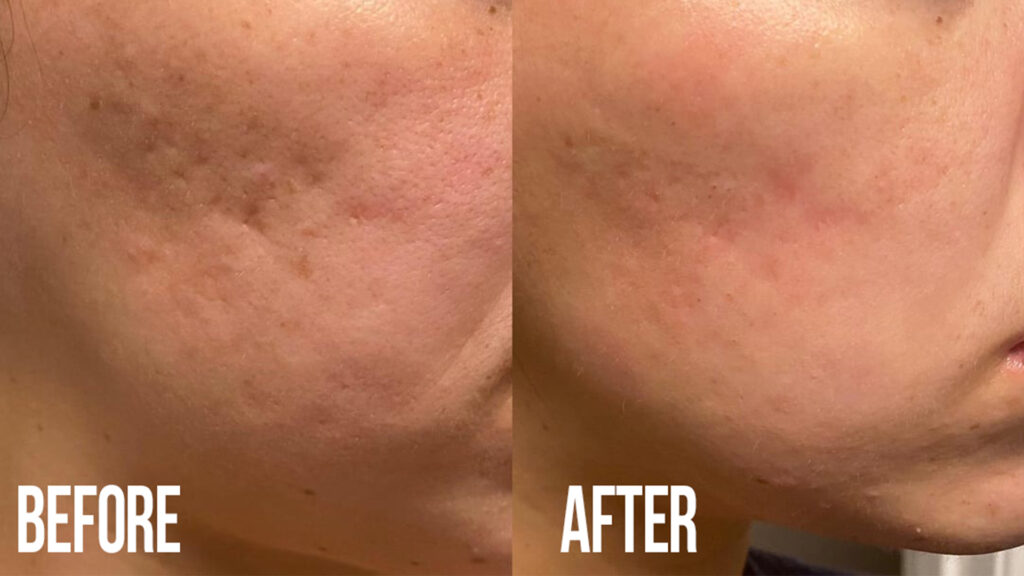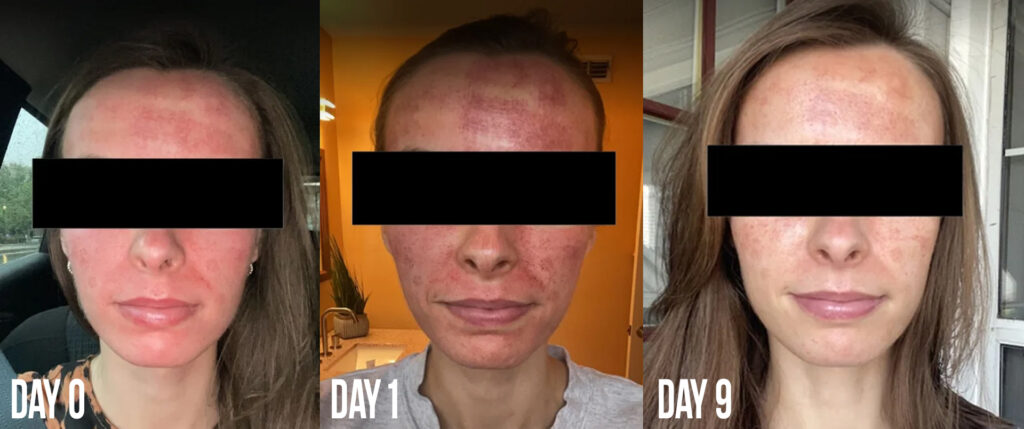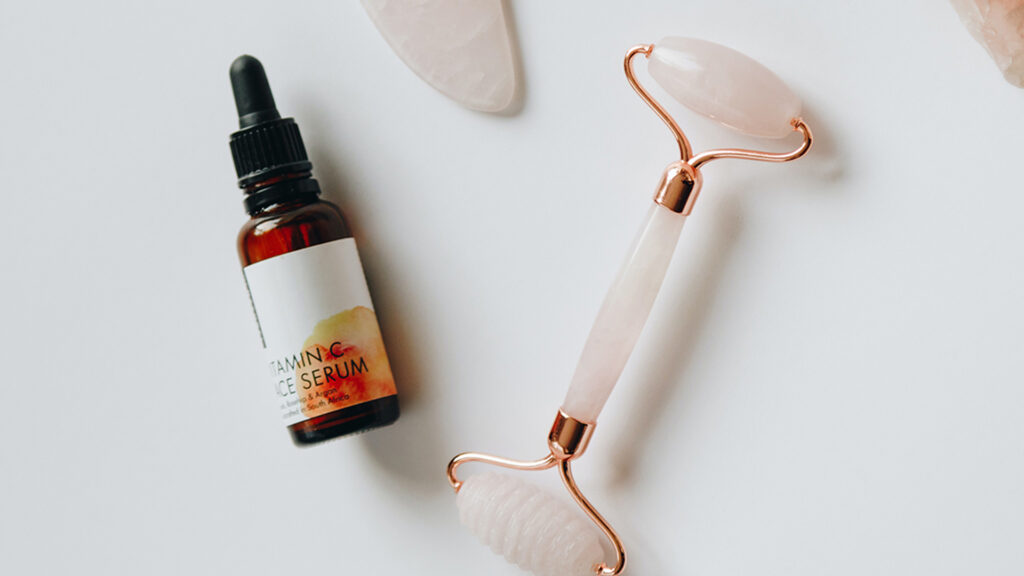Address
430 E 29th St, New York, NY 10016, United States
Need help or have a question?
Contact us at: hello@doctormier.com
Address
430 E 29th St, New York, NY 10016, United States
Need help or have a question?
Contact us at: hello@doctormier.com

Microneedling therapy is considered a procedure that has a cumulative effect, so the final result depends not only on the specialist's hand. You may know that the skin becomes very vulnerable after a microneedling procedure, so how can you be sure of the effectiveness of the method if the result of treatment becomes noticeable only a few weeks afterward?
It is your post-care approach to skincare after a microneedling that will determine whether the efforts and resources spent on it were worthwhile. Read our article on how to take care of your skin after the microneedling procedure, and what components will best promote skin recovery.

Microneedling treatment, also known as collagen induction therapy or dermarolling, is a cosmetic practice that uses a simple yet effective method: controlled micro-injuries. This method involves making tiny pinpricks on the skin's surface. At first, it might sound strange, but it’s actually the secret to healthier skin!
These micro-injuries boost the skin's natural healing processes, triggering the natural production of collagen and elastin, making the skin surface stronger, bouncier, and more youthful-looking.
The depth and density of these micro-injuries can be adjusted to address specific skin issues and the area that needs treatment.
The final stage lasts the longest because the skin is fully restored within a month. However, with just a little patience, microneedling will prove to make smoother skin, reduce those pesky fine lines and wrinkles, and even fade things like acne scars and dark spots.
😊 Smoother skin texture: Microneedling helps to get rid of discomforting roughness and instead boosts the skin like a high-intensity interval training workout (HIIT), resulting in a silky smooth texture.
🌟 Reduced fine lines and wrinkles: If one does not feel comfortable with natural aging features, or they start to show up earlier than expected, microneedling might just be the thing. It serves as a trusted sidekick in the battle against signs of aging, minimizing the appearance of fine lines and wrinkles.
🧼 Managing skin conditions: Microneedling can be a real problem solver for such issues as acne scars, stubborn dark spots, hyperpigmentation, and other skin complications you'd wish to work with.
✨ Youthful appearance: Microneedling is a natural, non-surgical way to achieve a more youthful complexion, giving your skin a fresh and youthful glow.
Now that you know the ins and outs of microneedling, you might wonder why it’s such a popular choice nowadays.
Microneedling is like getting a facelift without going under the knife. It's non-surgical, which means you can get remarkable results with minimal downtime, much less than you might expect from surgery.
It is also a game-changing technique that has shown exceptional promise in the treatment of scars, including acne scars [1]. Not only does it make them less noticeable, but also helps the skin feel smoother and look more even.

In the following sections, we'll explore microneedling in greater detail, covering important aspects like aftercare for microneedling, precautions, and what to expect during a session.

Straight after the microneedling session, the skin will feel a little sensitive, with a hint of swelling and redness. Don't worry — it's all part of the process!
Make sure to avoid direct sunlight while returning home, and prepare a wide-brimmed hat or even an umbrella in advance if you can't jump into the car or find shadow right away.
During this phase, the skin may still look red and feel slightly tight and dry. It is crucial to follow the practitioner’s instructions and keep the treated area clean and moisturized. The skin may experience minimal flaking or peeling, which is natural as dead cells are shed.
By this point, it’s likely that the redness and swelling are diminishing. Although some pinkness may persist, many individuals experience improvements in skin tone and texture. It's safe to reintroduce mild skincare products during this period, but it's advisable to avoid harsh ingredients.
As the days progress, the redness should fade significantly, and the skin surface will appear clearer and smoother. Collagen production remains active, leading to ongoing enhancements in the skin's appearance over the next several weeks to months.

The full benefits of microneedling may require some patience, as collagen production and skin remodeling continue over time. Many individuals report a reduction in fine lines, improved skin texture, and a more youthful complexion in the months following their final treatment session. To maintain these results, your practitioner may recommend periodic maintenance treatments.

Hyaluronic acid is like a water magnet for your skin — it does a fantastic job of keeping moisture locked in. It's often used after microneedling to keep the skin hydrated, promote healing, and maintain skin suppleness.
Serums that contain this ingredient ensure a healthy environment to recover, so introducing hyaluronic acid into your aftercare routine will help to keep your skin plump and revitalized.
Vitamin C is an antioxidant that protects the skin from free radicals and stimulates collagen production. It can help with reducing hyperpigmentation, improving skin tone, and enhancing the results after microneedling.
Sunscreen becomes your skin's best friend after microneedling. Opt for SPF 30 or higher to create an effective shield against UV damage. UV exposure can exacerbate skin sensitivity and worsen hyperpigmentation.
However, keep in mind that you should not apply sunscreen immediately following the procedure and the first 24 hours after the procedure, since it may contain irritants and its dense oil composition can block pores.
Retinol is a form of vitamin A that can promote skin renewal, improve texture, and reduce signs of aging. While retinol is a potent ally in skin renewal and texture improvement, it's prudent to exercise caution after microneedling.
Due to potential skin sensitivity, it's advisable to temporarily suspend retinol use for several days to a week after the procedure. This ensures that your skin heals without any unnecessary irritation.
While coconut oil is celebrated for its natural moisturizing properties, its suitability immediately after microneedling is a subject for careful consideration. While it can offer hydration, some individuals might want to exercise caution, as it has the potential to clog pores. To steer clear of breakouts, opt for non-comedogenic products, specifically designed to prevent pore blockages.
Consider incorporating other after-microneedling care compounds such as peptides, niacinamide (vitamin B3), aloe vera gel, growth factors, ceramides, antioxidants (like vitamin E and ferulic acid), and specialized hyaluronic acid serums formulated with beneficial ingredients. Be sure to consult a dermatologist about your skin's needs and the proper use of our recommended components.
In the handy table below, you will find a brief overview of which products are good to use during skin recovery after microneedling and which ones should be avoided for a while.
| Component | Safe to Use | Component | Avoid Using |
| Hyaluronic Acid Serums | ✅ | Retinol | ❌ |
| Vitamin C Serums | ✅ | Coconut Oil | ❌ |
| Sunscreen | ✅ | Alpha Hydroxy Acids (AHAs) | ❌ |
| Peptides | ✅ | Beta Hydroxy Acids (BHAs) | ❌ |
| Vitamin B3 | ✅ | Benzoyl Peroxide | ❌ |
| Aloe Vera Gel | ✅ | Alcohol-Based Products | ❌ |
| Ceramides | ✅ | Essential Oils | ❌ |
| Vitamin E | ✅ | Scrubbing Components | ❌ |
| Ferulic Acid | ✅ | Fragrances | ❌ |
Follow post-treatment instructions: Your skincare professional will provide specific instructions for post-microneedling care. These instructions encompass cleansing, moisturizing, and the use of recommended products to promote healing and enhance results.
Be cautious with pain relievers: If needed, consult your practitioner before using ibuprofen or other pain relievers post-microneedling. Some medications can affect the healing process, so professional guidance is advisable.
Avoid makeup and sunscreen: It's typically advised to refrain from wearing makeup and sunscreen for at least 24 hours post-microneedling. These products can introduce bacteria and irritants to the treated skin.
Only your doctor can answer the question “What to use after microneedling?” Consider using serums or skincare products recommended by your practitioner to support healing, hydration, and collagen production.
Discuss with your practitioner the potential benefits of oral supplements such as vitamins and minerals that can support skin health and healing [2].
To help reduce dryness and flaking during the healing process, keep your skin well-hydrated with a gentle moisturizer. Look for a non-comedogenic gel (not cream) that won't cause unnecessary pore clogging.
Microneedling therapy disturbs the protective properties of the skin; it is impossible to recover and fight sunburn rays at the same time. The same goes for the dust from the outside. It’s better to refrain from going outdoors for some time.
Use sunscreen of at least 30, and protective clothing or utilities like an umbrella, to protect the skin if there’s a need to go outside.
Steer clear of products containing harsh ingredients like , , retinoids, and benzoyl peroxide for several days to a week post-treatment, as they can irritate the skin.
When washing your face or showering, opt for lukewarm or cool water to minimize skin irritation and redness.
Refrain from intense exercise that induces sweating, as it can clog pores and lead to breakouts or infections.
Steer clear of hot water during face washing or showering, as it can exacerbate skin irritation and redness.
No picking! No scratching! No rubbing! No poking! It might be tempting, but all of this can disrupt the healing process and increase the risk of infection. Let the skin heal naturally.
Proper hydration and a nutritious diet can support the body's natural healing process and help to achieve better results.

Microneedling offers the potential for renewed skin, better texture, and a youthful appearance. However, achieving the best results requires more than just the procedure itself, whether it's microneedling at home or by a practitioner. The aftercare phase is just as important and requires careful attention.
In this article, we have analyzed the benefits of microneedling therapy, explored the best and worst components for improving skin conditions during the microneedling post-care recovery process, and shared important skincare tips. We hope you will find this article useful in helping you achieve healthy and beautiful skin.
And remember: don't hesitate to seek personalized advice from the professionals who understand your skin best.
You can give your face a gentle wash about 4–6 hours after microneedling, just follow your practitioner's advice. Use a mild cleanser or soap with no fragrance or harsh ingredients.
The dead skin will naturally peel away during the recovery. You can help it along with a gentle cleanser and moisturizer, but stay away from anything too harsh, like exfoliants or scrubs.
Firstly, if a breakout occurs, do not touch it with bare hands. Use a gentle, non-comedogenic moisturizer and avoid heavy or pore-clogging products. Reach out to your practitioner for more specific recommendations.
After microneedling, treat your skin with a soothing, non-comedogenic moisturizing gel. And if your practitioner recommends any specific post-care products, definitely give those a go.
Absolutely! Sunscreen is crucial after microneedling to protect your skin from damage. Use sunscreen with SPF 30 or higher to prevent hyperpigmentation and sunburns.